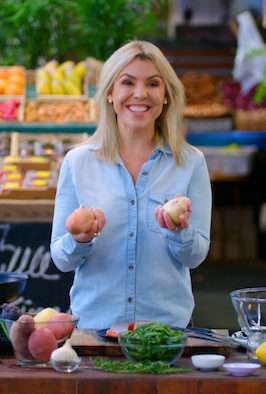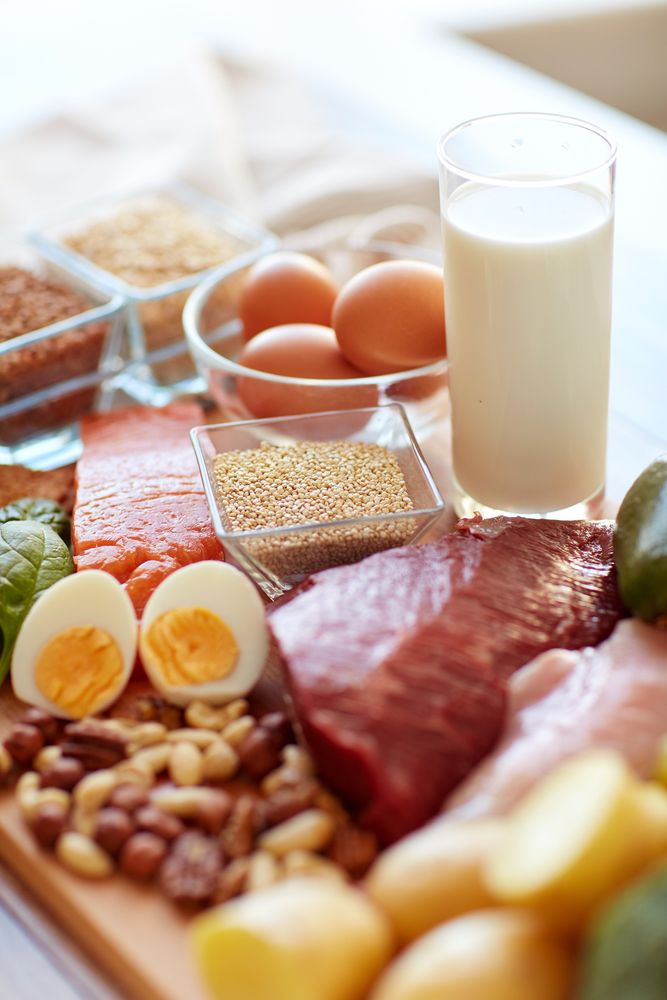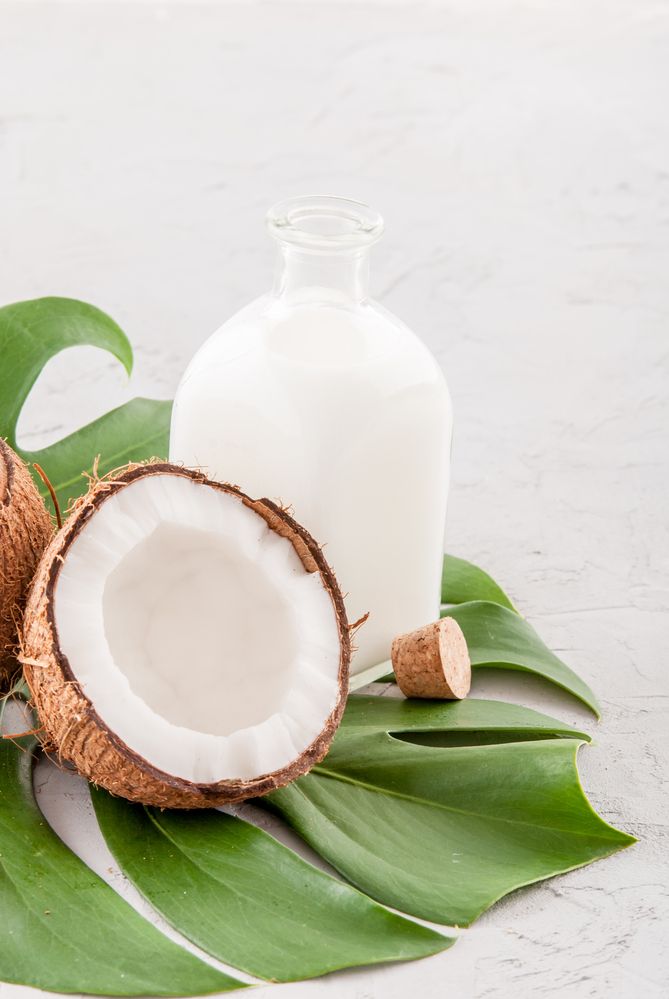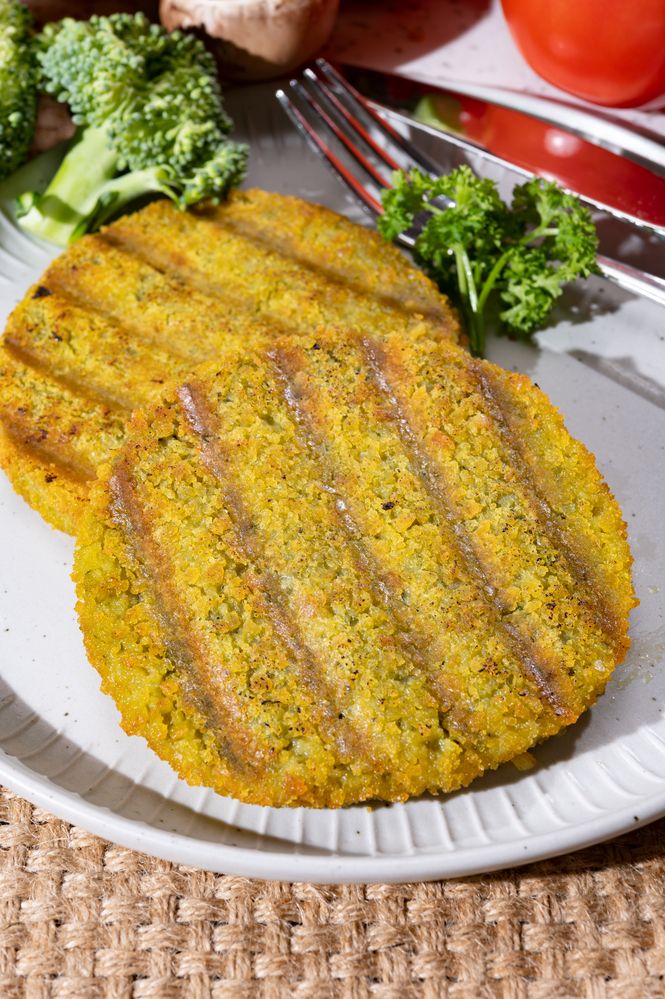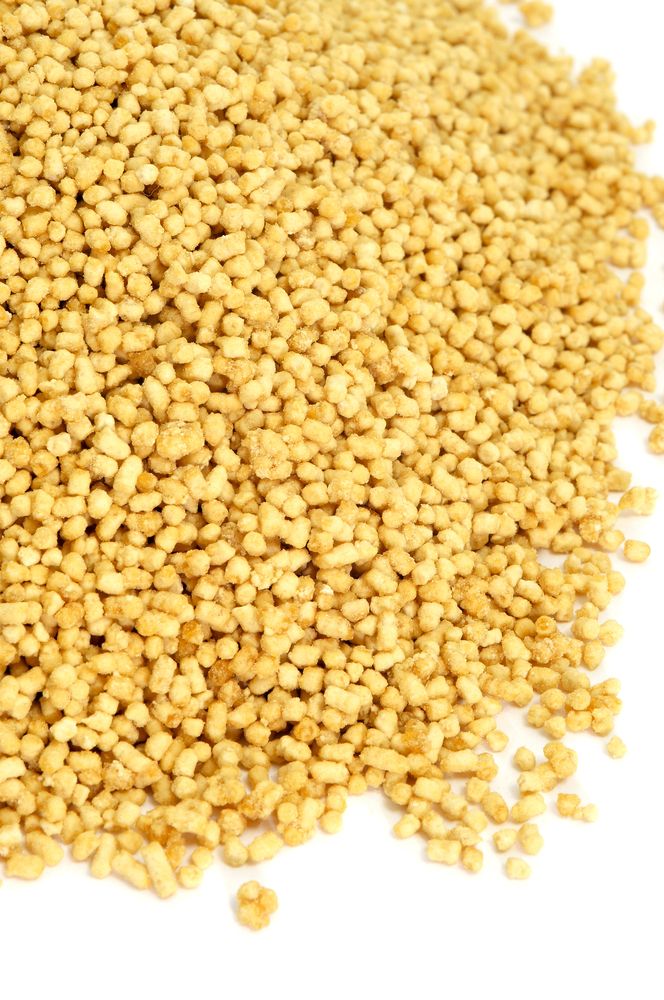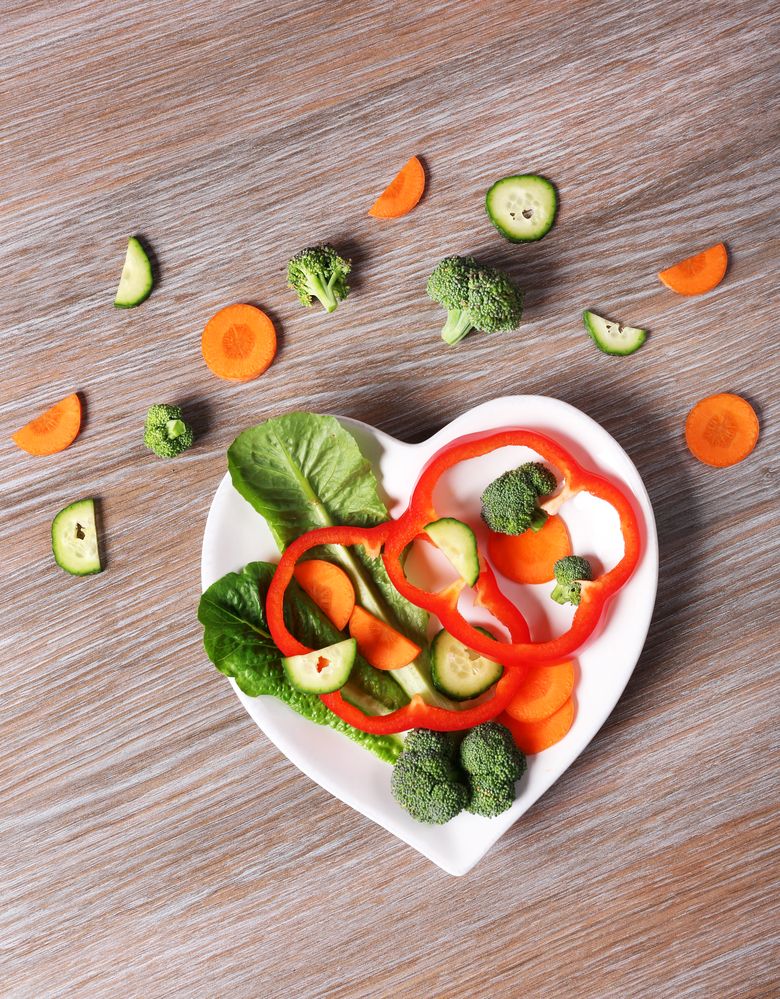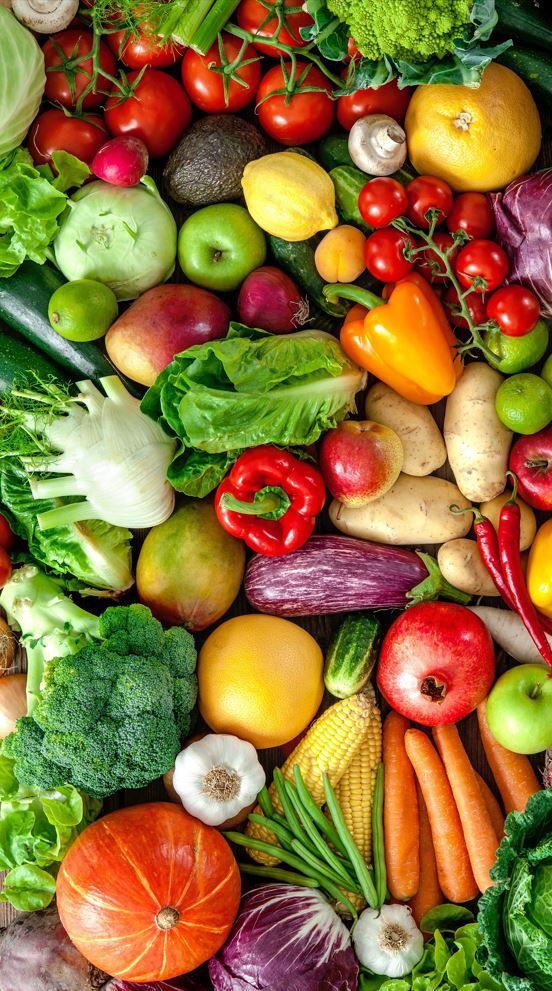5 years of Health Star Ratings – are they working?
Written by Catherine Saxelby
on Wednesday, 16 October 2019.
Tagged: food labels, health, Health Star Rating, healthy eating, label, nutrition

Five years after its implementation in June 2014, a review of the Health Star Rating (HSR) has found it performs well. Studies have shown that seeing the logo on the front of a pack effectively directs shoppers towards buying foods lower in kilojoules (Calories), saturated fats, sugars and sodium.
Is it all positive? Or are there a few problems that still need to be ironed out? Take a look at my thoughts…
What you’d expect
I think that you’d expect that basic foods like vegetables, fruits, meat and fish would score an average HSR of 4 while discretionary foods like confectionery and snacks would score lower, with an average of 2.
To me, this indicates a good alignment with the Dietary Guidelines which encourage us to eat more basic staples and to cut back on ‘processed junk’.
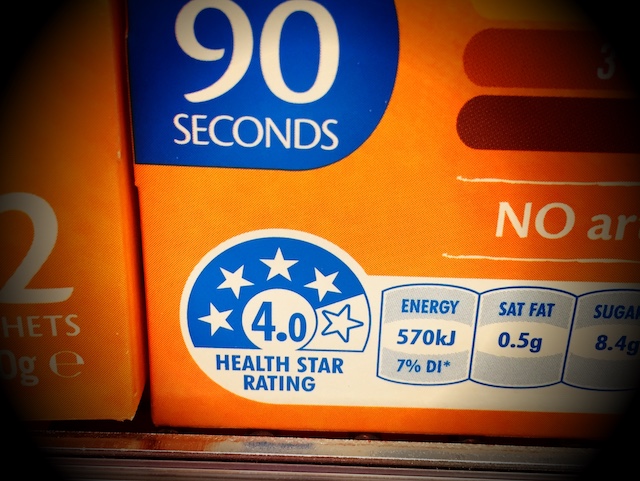
In Australia, I found it interesting that the products with the highest uptake of the voluntary rating are:
- non-dairy beverages: 608 products (11% of products displaying the HSR)
- processed meat and seafood: 459 products (8%)
- processed fruits and vegetables including legumes: 386 products (7%)
- savoury snacks: 381 products (7%)
- dairy products including dairy alternatives: 367 products (7%)
Interestingly, only a small number of retailers and manufacturers are responsible for a large proportion of the uptake. Coles, Woolworths and Aldi Private Labels collectively accounted for 56 per cent of the total. Five manufacturers (Simplot, Nestlé, Lion, Coca-Cola Amatil and Unilever) collectively accounted for 16 per cent of total uptake. So it would appear that only the big companies have the resources needed to introduce it.
In summary, the Review says these four positive things about the Stars:
- The HSR is being displayed on approximately one-third of packaged foods in Australian and New Zealand supermarkets, with uptake steadily increasing since its introduction.
- Most Australian and New Zealand consumers view the HSR as easy to understand and use and feel that it makes it easier for them to decide which packaged foods are healthier.
- In Australia, 23 per cent of surveyed consumers were influenced by the HSR to change their purchasing behaviour and purchase a product with more Stars. In New Zealand, 28 per cent of surveyed consumers used the HSR to help choose a product, with the vast majority choosing the product with more Stars.
- The HSR System is also encouraging positive reformulation of foods, with New Zealand research showing that 79 per cent of products displaying the HSR had been reformulated since 2014.
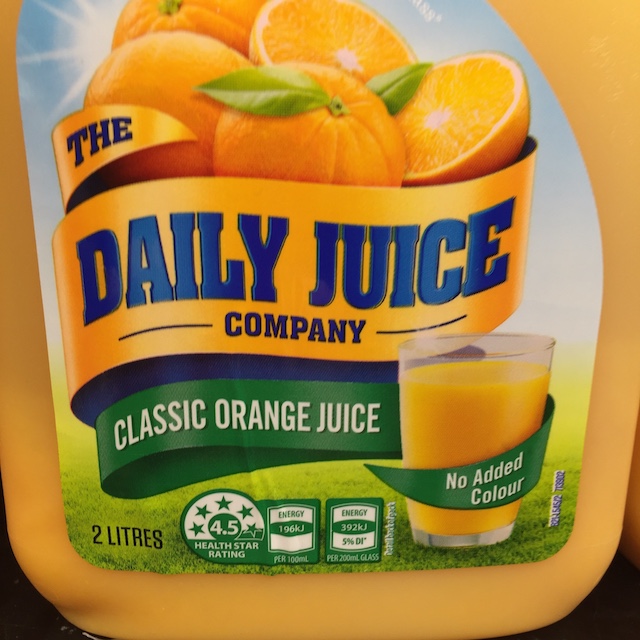
Many products have been reformulated to reduce sodium, sugars and/or saturated fat and increase wholegrains and fibre to boost the nutritional profile as a direct result of the HSR System. For example, I have documented how one manufacturer reformulated a breakfast cereal to reduce salt content by 25 per cent, dropped the sugar by 17 per cent and boosted the fibre by a huge 66 per cent. Read more here.
There are 10 recommendations:
- The HSR System should be continued.
- The icon for energy only, which is approved as a graphic Option 5, should be removed. It is not well understood and is currently being over-used by confectionery and sweetened soft drink makers.
- Governments, industry, public health and consumer bodies should continue to promote the HSR System.
- Changes should be made to the way the HSR is calculated to better align with Dietary Guidelines, reflect emerging evidence and address consumer concerns. The Review suggests the following:
- fruits and vegetables that are fresh, frozen or canned (with no additions of sugar, salt or fat) should automatically receive an HSR of 5.
- total sugars should be more strongly penalised, lowering the HSRs of 5% of products (including breakfast cereals, snack bars, sweetened milks, ice creams and sugar-based confectionery)
- sodium sensitivity should be improved for products high in sodium, reducing the HSR of 1% of products (all with sodium in excess of 900mg/100g such as soy sauce)
- dairy categories should be redefined to increase the HSRs of dairy foods such as cheese and yoghurt and decrease the HSRs of some dairy desserts, improving comparability between dairy products.
- jellies and water-based ice confections should be re-categorised to decrease their HSRs.
Based on modelling, these changes are expected to decrease the HSRs of approximately 10% of products (mostly discretionary foods) and increase the HSRs of approximately 6% of products (mostly basic foods such as fruits, vegetables, yoghurts and cheeses).
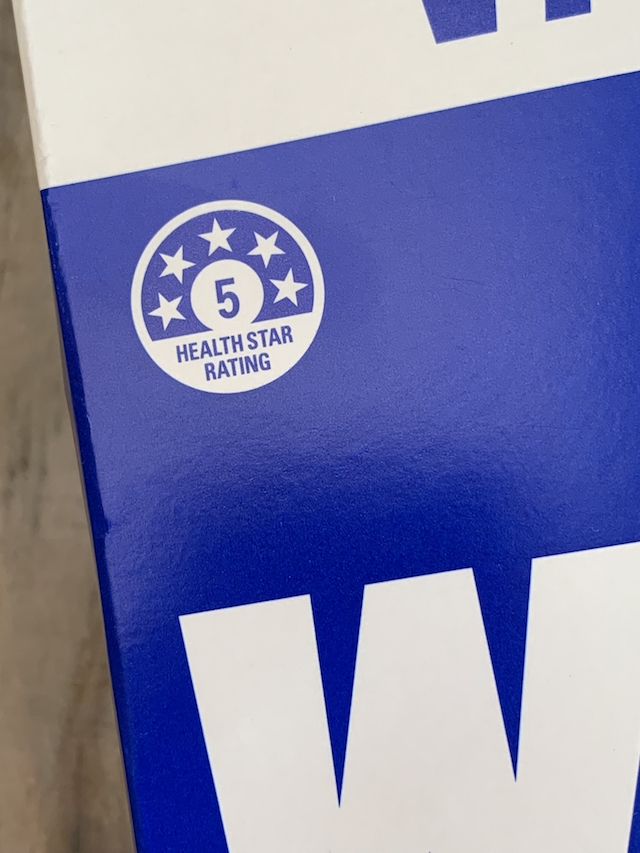
The HSR System fails to adequately distinguish between added sugars and intrinsic or naturally-occurring sugars. Having said that, there is currently no agreed definition of added sugars, nor is there an analytical method for measuring only added sugars, as these are chemically identical to intrinsic sugars and are processed by the body in the same way.
- The way the HSR is calculated for non-dairy beverages like sports drinks or fruit juice should be changed. It should be based on the points from sugars, energy and fruit/vegetables/nuts/legumes, to better differentiate water (and drinks similar to water) from high-sugared drinks.
Currently, fruit juices with relatively high total sugars receive HSRs of 4 to 5, while unsweetened flavoured waters generally receive HSRs of around 2 (despite having no sugars and being closer in nutritional profile to plain water).
The proposed changes mean that:
- plain waters will have an HSR of 5
- unsweetened flavoured waters 4.5
- 100% fruit and vegetable juices between 2.5 and 4 (based on their sugars and energy content)
- diet drinks no more than 3.5
- sugary soft drinks between 0.5 and 2 (based on their sugars and energy content).
This seems much fairer to me.
- The Stars should continue to be jointly funded by Australian and New Zealand governments for a further four years.
- A few minor changes should be made to the governance of the system.
- Public health initiatives should be enhanced by
- regular updates to the Dietary Guidelines
- regular national nutrition surveys
- establishment of a comprehensive, dataset of branded food products
- improved monitoring of the System.
- The system should remain voluntary, but with clear targets. If the HSR is not displayed on 70 per cent of products within five years, the HSR System should be made compulsory.
- The existing Guide for Industry and the Style Guide should be revised and strengthened, providing greater certainty for stakeholders.
Anomalies are recognised
The Review lists several anomalies that are obvious now:
- Canola oil is rated with 5 Stars as it has a lower saturated fat whilst olive oil only gets 4 Stars, even though it is cold-pressed and grown in Australia (less processing than canola).
- Milo drink gets 4 Stars when mixed with milk but only 1.5 without milk (dry powder),
- The HSR give no advantage to buying wholegrain varieties over refined products (for example, choosing between white and wholegrain bread, or white and brown rice). This is a serious omission as there’s lots of research into the benefits of whole grains.
The Health Stars on the Foodwatch website
Over the years I’ve written about both the Health Star Ratings themselves and some surprising products that have managed to score 4 and 5 stars. I’ve listed them below so you can check them out.
The Health Star Rating – what is it and what does it mean for you
5 steps to calculate the Health Star Rating
The Worst 30 Foods for you to eat (beware)
Product snapshot: FroPro – 5 Star ice cream
How does Nutri-grain breakfast cereal score 4 Stars?
Product Snapshot - Noshu 99% Sugar Free Fudgy Brownies
The bottom line
The Stars are currently voluntary and only appear on packets at the discretion of manufacturers. This is a major shortcoming – it needs to be on virtually every food at a supermarket for it to work.
This Review, whilst based on the best available evidence, aims to keep the HSR System as simple as possible and is intended to support consumers to choose between like products. For instance, it helps when trying to choose between two muesli bars or two breakfast cereals. Don’t use it to compare wildly-differing foods such as an apple compared to smoked salmon. It won’t help you.
You can’t use it to find out where your food has been grown, if it’s organic or nut-free, if it’s grass-fed or wild-caught or its degree of processing. It was never intended as a complete source of dietary advice - you’d have to see a dietitian for that. You can read the full review yourself here.
Reviews
-
Read more
Product review: Low-sugar alcoholic ginger beer
1 March 2023 by, Catherine Saxelby
Want something to drink before dinner? Something that’s LOWER in alcohol than wine? To match his beer? Then look no further than Bundaberg’s low-sugar alcoholic ginger beer.
You can drink Bundaberg low-sugar ginger beer straight from the can, or pour it into a long glass over ice with a slice of lime.
-
Product snapshot: Berkelo’s Khorasan Macaroni
14 September 2022 by, Catherine Saxelby
I’m loving this macaroni from Berkelo. I was sent a sample for Whole Grain Week 2022 by the Grains Legume Nutrition Council. I cooked it up and found that it was just divine! Read on for more …
-
Product review: Super high-oleic safflower oil
11 May 2022 by, Catherine Saxelby
“What does super high-oleic mean?” I hear you ask. Also, “I haven’t heard of safflower for ages. What’s the deal?” Read on and all will be explained.
-
Product review: Healthy Life Food Tracker
6 April 2022 by, Catherine Saxelby
When I was first asked to write this review, I thought, Not another tracker.
After all, there have been several in recent years, such as My Fitness Pal and Everyday Diet Diary. But this one is different. It works by using your Everyday Rewards card AND your shop at Woolworths.
-
20 October 2021 by, Catherine Saxelby
With home delivery on the rise, this post is reviewing none other than that stalwart Lite n’ Easy. We all know their meals are good for weight loss (which we all need after COVID-19!), but did you know they’re also good for general health and wellbeing ? Eating well to nourish yourself – putting your mental health and wellbeing at the forefront – is gaining momentum. Lite n’ Easy meals also ensures you satisfy your need for vitamins, minerals, fibre and phyto-compounds, such as sterols and carotenoids.
 This post has been sponsored by Lite n' Easy.
This post has been sponsored by Lite n' Easy. -
Product review: Birds Eye Plant Based range
15 September 2021 by, Catherine Saxelby
When you think of Birds Eye, their frozen peas and fish fingers probably come to mind. But I bet you’d never think of plant-based products!
 This post has been sponsored by Birds Eye.
This post has been sponsored by Birds Eye. -
Product Snapshot: Olina’s Snackers Crackers
2 June 2021 by, Catherine Saxelby
We sampled Olina’s latest offering in the seeded cracker range – called Olina’s Bakehouse Seriously Seedy Snackers (which is a great name BTW). They come in four flavours: Barbecue, Chilli & Lime, Beetroot & Sour Cream, and Balsamic Vinegar & Caramelised Onion. Take a look at our verdict.
Healthy Weight Loss
-
Read more
Intermittent fasting vs daily calorie restriction
3 May 2023 by, Catherine Saxelby
As you probably know already, intermittent fasting (IF) has gained favour as an alternative regimen to daily caloric restriction (DCR). Fasting is shown to extend the lifespan of rats, and has been associated with metabolic benefits in humans, yet the results so far have been inconsistent. So, which regimen is best for healthy weight loss?
-
15 March 2023 by, Catherine Saxelby
What sort of a diet should you follow to lose that excess weight? These days, it’s pretty confusing with high-protein Keto advocates clashing with plant-protein followers … as well as intermittent fasters, juice-only dieters, no-carb dieters and no-animal (aka plant-based) dieters. Plus all the ads for anti-hunger supplements, meal-replacement shakes and home-delivered meals, more of which somehow appear every day. So, what sort of diet should YOU follow to lose that excess?
-
Protein shakes for weight loss
9 November 2022 by, Catherine Saxelby
These days, protein shakes aren’t bought by just body builders – they’re so popular that you can readily buy a 400 g tub at your local supermarket or service station. And with tempting claims such as ‘Facilitates muscle toning’, ‘Contains transformation-making protein’ and ‘Tastes incredible, mixes easily’, why wouldn’t you grab one? But protein shakes aren’t the magic answer to all your weight-loss woes. Let’s take a look at what you get for your money.
Guest post by dietitian Zoe Wilson APD
-
20 January 2021 by, Catherine Saxelby
Many of us have cravings from time to time and for different reasons. One thing is certain, they can sabotage all your best efforts at a healthy diet and/or weight loss. The good news? You CAN beat them. I’ll tell you how.
-
How to lose weight WITHOUT going on a diet
14 October 2020 by, Catherine Saxelby
The word 'diet' is a turn-off for most people. It sounds hard, unpleasant and unpalatable. Losing weight doesn’t have to be hard AND it doesn’t have mean sticking to a 'diet'. You can forget Paleo, Keto, Vegan and Raw, Gluten-free and Intermittent Fasting. To lose weight, you don’t have to follow any specific diet. What you need is simple, healthy, nutritious food and a few tips and tricks.
-
What IS a healthy balanced diet for weight loss?
16 September 2020 by, Catherine Saxelby
Healthy weight loss happens when you lose weight slowly and steadily (around 1 kg or 2 pounds weight loss a week). Your goal is to lose weight while still getting your essential nutrients but from smaller portions. You certainly don’t want to be tired with no energy! That’s why you need regular healthy meals and snacks on hand to ensure your vitamins, minerals, omega-3s and fibre needs can be easily met. There is a new range of healthy weight loss meals available and it’s one that I’d like to recommend. With these ready meals, you’ll say goodbye to meal planning, shopping, meal preparation and cooking.
This post is sponsored by Chefgood
-
Kitchen make-over for the New Year
8 January 2020 by, Catherine Saxelby
“This year, I'm going to lose weight!”, or “This year I’m opting for a healthier lifestyle!” Is your 2020 New Year's resolution something like one of these? If so, how is it going to happen?
Most popular
-
Read more
Q. What's the difference between Diet Coke and Coke Zero?
12 September 2013 by, Catherine Saxelby
A. At first glance, Diet Coke and Coke Zero appear to be identical. Both contain no kilojoules (Calories) and no sugar. Both are artificially sweetened with (the same amount) of aspartame and acesulfame K and therefore have the same ‘sweetness’.
-
How to convert sodium to salt (and salt to sodium)
6 August 2010 by, Catherine Saxelby
As a nutritionist, my aim is to help busy women eat healthily. One of the ways to do this is to follow the general nutrition advice to reduce the salt in your diet. So, how can you do this when what you’ll see on a food label and on any recommended daily intakes is sodium?
-
7 types of sugar - which is healthier?
11 December 2013 by, Catherine Saxelby
Last week on the radio, the announcer asked me if there was a 'good' sugar – one that would satisfy her sweet tooth but that was 'healthier' than regular white sugar. She figured if there were 'good' carbs and 'bad' carbs there must be some sugars that would get the nod of approval from nutritionists.
-
Eat to beat gastro and diarrhoea
12 October 2012 by, Catherine Saxelby
A clear fluid diet is the best form of treatment for gastro and tummy upsets. It is the "lightest" type of diet, designed to place as little strain as possible on the digestive tract. It is NOT nutritionally adequate and should be followed only for a strictly limited time e.g. two or three days but no more than a week.
-
Nutella. The full (correct) list of ingredients
12 April 2011 by, Catherine Saxelby
Have you ever tried to find the exact list of ingredients for Nutella online? The identical one that appears on its label - in descending order from the first (largest ingredient by weight) to the last ingredient, as required by law? Well, you won’t find it! Here’s the hoop-la I went through to discover exactly what the ingredients in Nutella are and why Nutella is not good for your kids.
-
Sugar - why quitting sugar guarantees you'll lose weight
6 May 2013 by, Catherine Saxelby
Sugar. It's been labelled "deadly", "addictive", "toxic", "sweet poison" and blamed for the rise in global obesity in recent years." Get rid of the white toxin from your diet and you'll free up your body to drop those excess kilos" (or so say anti-sugar campaigners Sarah Wilson, David Gillespie and Robert Lustig). Here are the three real reasons why I believe quitting sugar helps you lose weight.
-
What does 8,700 kilojoules look like?
14 August 2012 by, Catherine Saxelby
8,700 is a magic number in nutrition. It’s the number of kilojoules (kJ) that is the “average” intake for adults in Australia, if the surveys are correct.
It’s widely used as a benchmark figure and as the basis of food labels such as the Percent Daily Intake values.
Recently kilojoules have appeared on fast food menu boards and they use 8,700 as the yardstick to assess their foods against. Here's my take on it.
Recipes
-
Read more
24 May 2023 by, Catherine Saxelby
This is a kind of pavlova topped with fruit, but the base is made from ricotta, rather than egg whites and sugar.
-
22 March 2023 by, Catherine Saxelby
This is an Asian-influenced salad that’s perfect to serve as a side salad at a BBQ or with a fillet of fish.
-
14 December 2022 by, Guest Post
This banana loaf is half bread and half cake. Hence I've called it "cread" which is halfway! It’s dense and delicious without being super-sweet or oily. It can be enjoyed fresh, toasted or sliced and frozen into portions to enjoy later.
-
23 November 2022 by, Guest Post
This quick and easy dessert is ready in minutes. And there are NO leftovers to tempt you later!
-
19 October 2022 by, Catherine Saxelby
A quick and easily-made sandwich, it’s great for an easy lunch.
-
Spring Vegetable Pesto Pasta Salad
7 September 2022 by, Guest post
This super salad-in-one gives you pasta plus vegetables all together. It has a spring feel to it.
-
Squash-ed spaghetti bolognaise
3 August 2022 by, Guest post
This is an excellent make-and-freeze recipe, so weeknight meals become more manageable. I know of no better way of ‘hiding’ veggies than in a Bol sauce – somehow mince with a few veggies like pumpkin or zucchini is a match-made-in-heaven.
Foodwatch
The Good Stuff
The Boring Stuff
© 2025 Foodwatch Australia. All rights reserved
Website by Joomstore eCommerce
